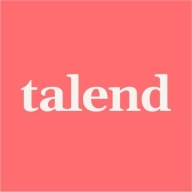

Zapier and Talend Data Integration compete in the data management and automation category. Zapier holds the upper hand for users seeking ease of use and quick setup, while Talend offers comprehensive capabilities for complex data tasks.
Features: Zapier enables seamless application integration, offering easy-to-use automation for non-technical users. Its diverse set of connectors helps save development time. Talend Data Integration excels with its TMap component for complex transformations, sophisticated data management, and efficient handling of large data sets.
Room for Improvement: Zapier users seek enhancements in Google Sheets functions, better API support, improved error reporting, and enhanced chat support. Talend needs a simpler setup process, improved real-time data integration, better documentation, and more affordable licensing regarding additional tokens.
Ease of Deployment and Customer Service: Zapier offers seamless deployment on public cloud platforms and varied customer support experiences. Talend provides flexibility with public, hybrid, and on-premises deployment options, though its technical support speed and proactivity need improvement.
Pricing and ROI: Zapier's pricing is considered high, but its automation capabilities justify the cost for many users. Its free tier allows basic automation but costs rise with more use. Talend is seen as more expensive due to licensing costs, yet users value its comprehensive features. Zapier delivers higher ROI through time savings in automation, while Talend offers ROI via robust data integration functionalities.
It has helped us save a lot of time by automating repetitive data processes and reducing manual interventions.
They didn't want to use separate ETL tools for MDM or for TMC and data preparation, which is all included in one package.
In a scenario where employing three resources for three months might cost approximately $18,000 to $20,000, Zapier provides substantial cost savings.
The support team is responsive when we raise issues, and they usually provide clear guidance or solutions.
The customer support for Talend Data Integration is very good; whenever I raise a ticket in the customer portal, I immediately receive an email, and follow-up communication is prompt.
Their technical support is good; they respond promptly and are very helpful.
This can help if you need assistance, as you can communicate with the community and support system, and most issues are already resolved by AI.
Sometimes, in my early days, when I was stuck with something, they helped me solve these issues, and even helped me solve some of my automations.
By using features like job parallelization and modular design, we can expand our data flows without having to rebuild everything.
The scalability of Talend Data Integration is good; if it weren't scalable, it wouldn't be reliable.
Zapier is suitable for small or simpler automation but not for complex ones.
Scaling it gets quite expensive, and while I cannot evaluate it purely from a technology perspective, compared to Workato, I would give Zapier a seven for scalability.
Once the jobs are properly designed and deployed, they run reliably without major issues.
In my current company, we had significant challenges with Zapier regarding maintenance, as Zaps were often broken, not necessarily due to Zapier, but due to changes in the input variables.
It would be great to have more ready-to-use connectors for modern cloud and SaaS platforms.
Talend Data Integration can be improved by reducing the license cost, as it is a bit high compared to other tools, which can be a burden for small-scale companies wanting to buy a license.
Regarding ETL, Talend Data Integration is great, but concerning real-time data processing, people are not really sure about Talend Data Integration or might not know how it provides such types of flexibilities.
The error message options in the dashboard should be improved. It should be user-friendly so that beginners or non-technical users can figure out the problems and solutions on their own.
You can build similar or dependent automations in one Zap, which helps with understanding the process without switching between different records.
I would appreciate if there would be a feature where we can use actions right after loops. Currently, you cannot use any other action after the loop. Everything needs to be within the loop.
My experience with Talend Data Integration's pricing, setup cost, and licensing is that it is a bit higher compared to other tools, making it not very affordable.
The pricing is in accordance with market standards and even lower in some cases.
The pricing of Zapier is slightly higher compared to other market automation tools such as Pabbly, Make.com, and N8N, which have good features but are priced lower than Zapier.
By automating daily data loading processes, we reduced manual effort by around three or four hours per day, which saved roughly 60 to 80 hours per month.
Flexibility is a key feature I appreciate about Talend Data Integration, especially the integration of Java within it and the ease of integrating with multiple source repositories such as GitHub and Bitbucket.
The best feature of Talend Data Integration is its multiple data DB components; we have almost all the components and also cloud versions, with TMC allowing us to perform data preparation and data stewardship.
They have approximately 7,000 connections.
Even a person with no technical knowledge can use Zapier to create automations.
The automation capabilities are impressive.
| Product | Market Share (%) |
|---|---|
| Zapier | 2.6% |
| Talend Data Integration | 1.5% |
| Other | 95.9% |


| Company Size | Count |
|---|---|
| Small Business | 2 |
| Midsize Enterprise | 2 |
| Large Enterprise | 4 |
| Company Size | Count |
|---|---|
| Small Business | 29 |
| Midsize Enterprise | 10 |
| Large Enterprise | 7 |
Talend Data Integration efficiently handles data transformation and integration with ease, supporting complex business needs. It enables seamless data management across all sources.
Talend Data Integration offers a robust platform for managing and transforming data. It connects disparate systems, enabling data flow across various environments. Users benefit from its ability to streamline processes and improve data accuracy. Its user-friendly interface and flexibility make it a preferred choice for data integration experts.
What are the key features of Talend Data Integration?In finance, Talend Data Integration enhances transaction data processing and compliance reporting. In healthcare, it ensures accurate patient data management, while in retail, it optimizes inventory and customer data analysis. Its adaptability makes it valuable across multiple sectors, addressing specific industry requirements.
Zapier is a tool for primarily non-technical users to connect together web apps.
An integration between two apps is called a Zap. A Zap is made up of a Trigger and one or more Actions or Searches.
Whenever the trigger happens in one app, Zapier will automatically perform the actions or searches in another app in order.
Zaps are very lightweight and easy to set up. Zaps do not import or export old data (they only operate on new items created after the Zap is enabled). Zaps are also not kept in sync ("two way syncing") after the Zap is triggered.
Zaps are deceivingly simple if you're used to dealing with complex and difficult integrations. Their simplicity is what enables anyone to create them.
We monitor all Cloud Data Integration reviews to prevent fraudulent reviews and keep review quality high. We do not post reviews by company employees or direct competitors. We validate each review for authenticity via cross-reference with LinkedIn, and personal follow-up with the reviewer when necessary.